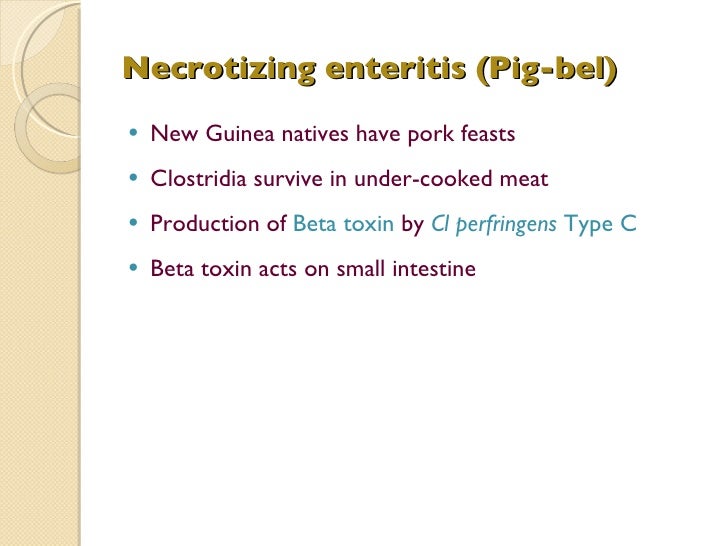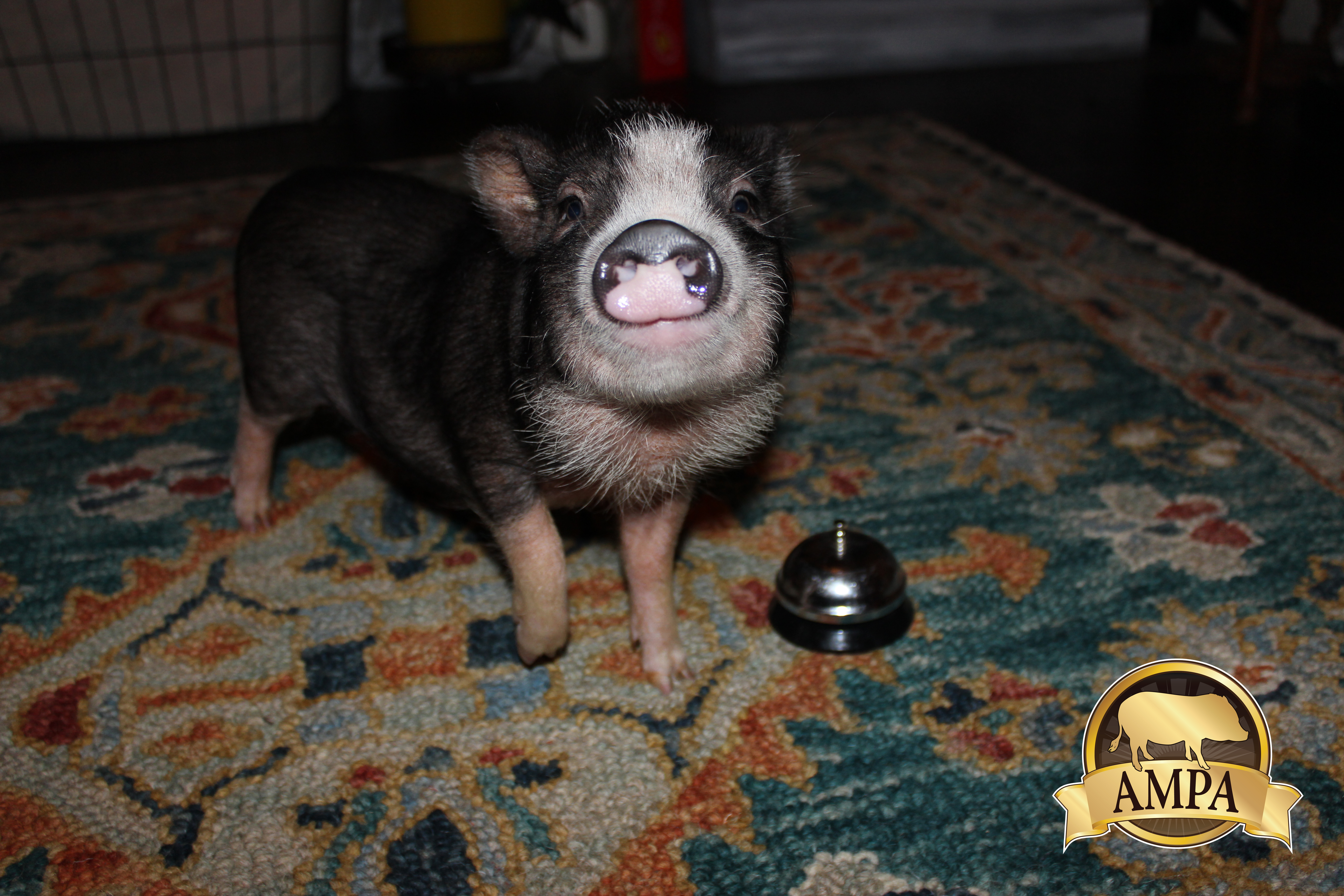Pig-bel Syndrome
Pig-bel syndrome. Deaths from necrotic enteritis pig-bel syndrome are caused by infection and necrosis of the intestines and from resulting septicemia. This disease also begins as a result of ingesting large numbers of the causative bacteria in contaminated foods. The symptoms are caused by ingestion of large numbers greater than 10 to the 8th vegetative cells.
Deaths in pig-bel syndrome are caused by infection and necrosis of the intestines and from resulting septicemia. In New Guinea the disease is known as pigbel and is usually spread through contaminated pork other meats and perhaps peanuts. Necrotic enteritis pig-bel caused by C.
To prevent infection by Clostridium perfringens follow the these tips. In order to prevent getting Clostridium perfringens food poisoning the following steps should be. The cause of pig-bel is a clostridial toxin the beta toxin of C.
The Type C strain of Clostridium perfringens can cause a more serious condition called Pig-bel Syndrome. Lawrence et al22 then devised a method of prevention by active immunization. Perfringens is often fatal.
Deaths from necrotic enteritis pig-bel syndrome are caused by infection and necrosis of the intestines and from resulting septicemia. This syndrome is seen in hospital and surgical practice after the widespread practice of pork feasting. The infective dose is around 108vegetative cells.
The disease has been called pig-bel because of its firm association with the pig-feasting practices of the people which occur in 37 year cycles. Pig-bel has been the name given to the disease because of its aetiological association with the pig-feasting customs of the New Guinea Highlander Murrell et al. This disease also begins as a result of ingesting large numbers of the causative bacteria in contaminated foods.
The toxin causes damage to the intestinal mucosa and enterotoxemia. Severity varies from mild diarrhea to a fulminant course of severe abdominal pain vomiting bloody stool septic shock and sometimes death within 24 hours.
In order to prevent getting Clostridium perfringens food poisoning the following steps should be.
Small cell numbers may be present after cooking and multiply to food poisoning levels during cool down and storage of prepared foods. In order to prevent getting Clostridium perfringens food poisoning the following steps should be. Summary quot Pig-bel quot is defined as an acute patchy necrotising and inflammatory disease of the small bowel in Highland Melanesians in New Guinea. The ecology and epidemiology of the pig-bel syndrome in man in New Guinea. Pig Bel or necrotic entiritis is a relatively rare but often fatal disease that sometimes follows as a complication of infection by the Type C strain of clostridium perfringens which is sometimes mistakenly referred to as the 24 hour bug These bacteria sometimes form on foods that are undercooked but more often they are found on cooked food that is left out for a long time. The symptoms are caused by ingestion of large numbers greater than 10 to the 8th vegetative cells. To prevent infection by Clostridium perfringens follow the these tips. Deaths from necrotic enteritis pig-bel syndrome are caused by infection and necrosis of the intestines and from resulting septicemia. The latter illness is known as necrotic enteritis or pig-bel disease and is often fatal.
The infective dose is around 108vegetative cells. Severity varies from mild diarrhea to a fulminant course of severe abdominal pain vomiting bloody stool septic shock and sometimes death within 24 hours. The infective dose is around 108vegetative cells. Clostridium perfringens is an anaerobic spore-forming and toxin-producing bacterium which can cause intense abdominal cramps diarrhea and - in rare cases - necrotic enteritis pig-bel syndrome. Necrotic enteritis pig-bel caused by C. The cause of pig-bel is a clostridial toxin the beta toxin of C. To prevent infection by Clostridium perfringens follow the these tips.





























Post a Comment for "Pig-bel Syndrome"